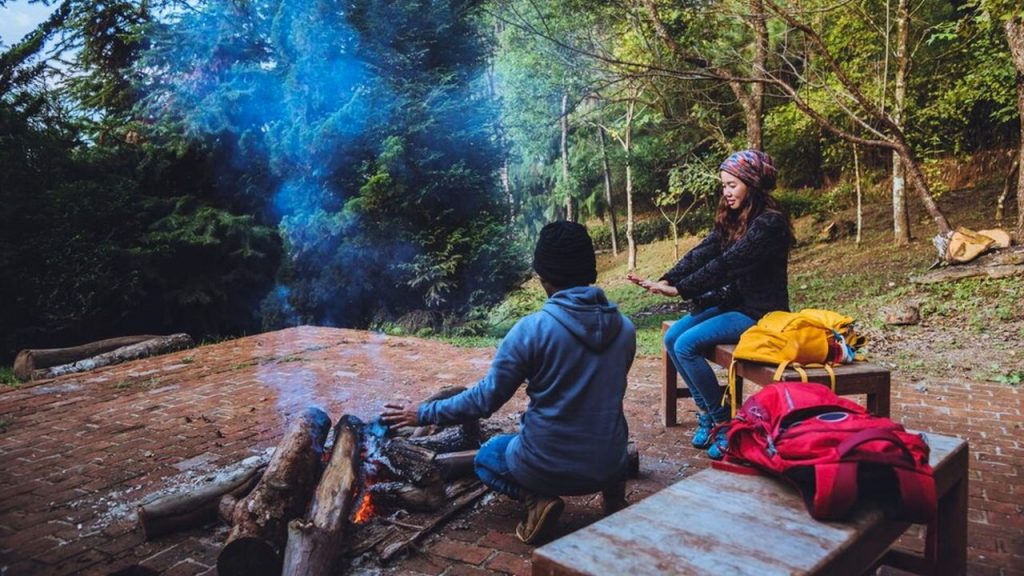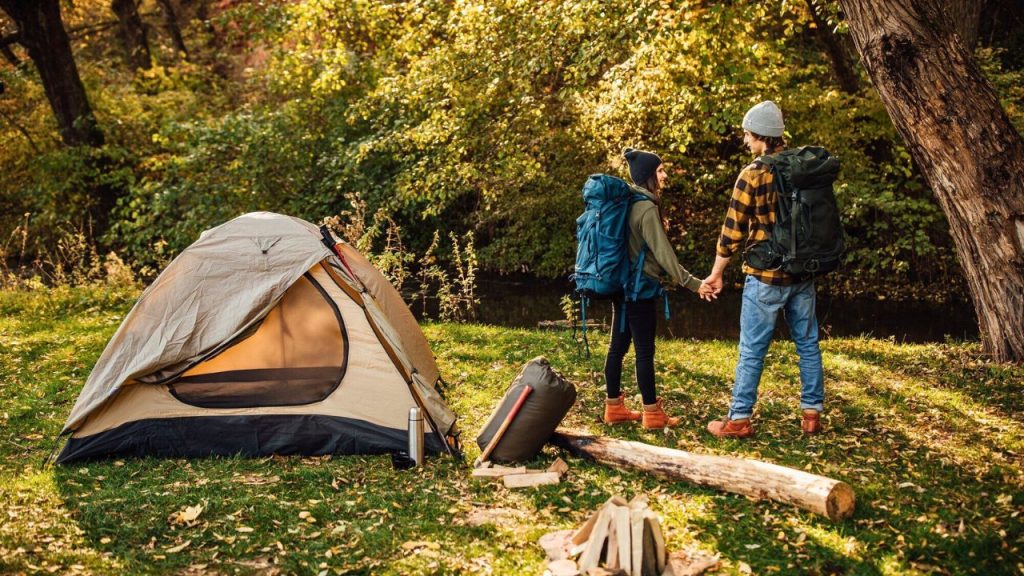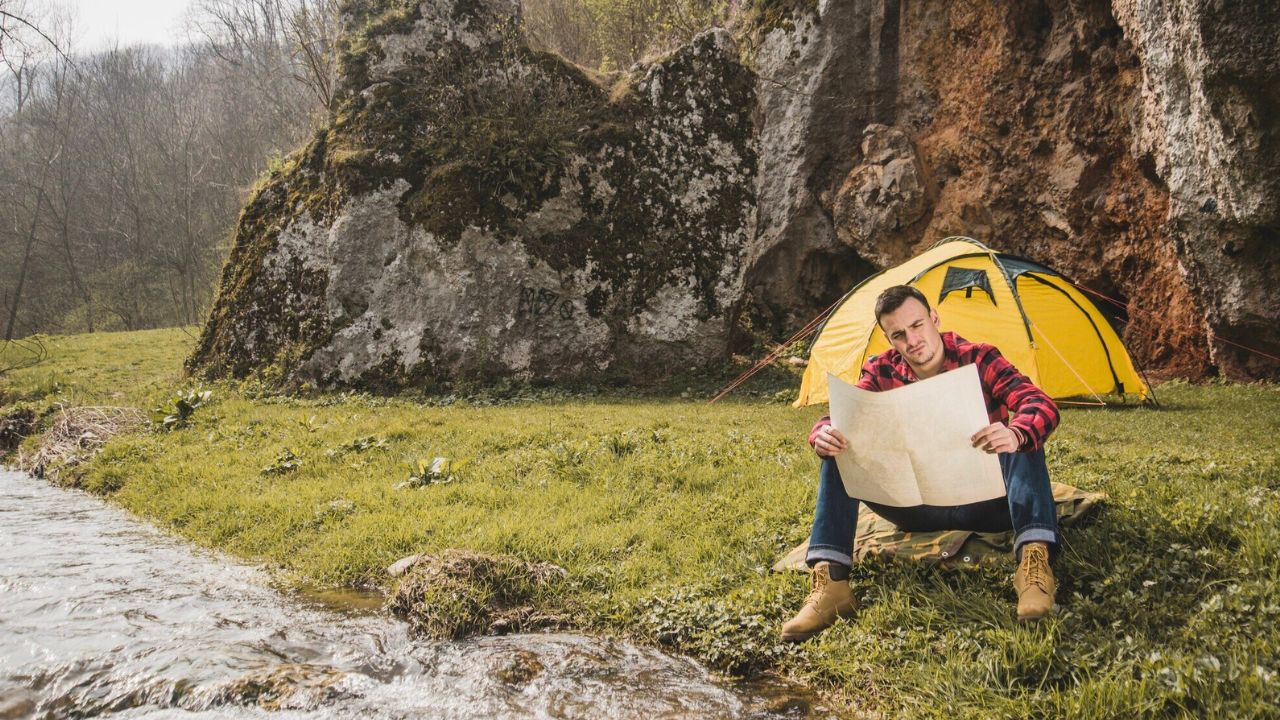When you’re camping, one of the best ways to explore the surrounding area is by hitting the hiking trails. Not only does hiking provide you with an excellent opportunity to immerse yourself in nature, but it also offers a great workout and a chance to discover hidden gems.
However, with so many trails to choose from, it can be overwhelming to know where to start. In this article, we’ll guide you through the process of finding the best hiking trails near your campsite.
Research Before You Go
Before you even leave for your camping trip, take some time to research the area you’ll be visiting. Look for information on the local hiking trails, including their difficulty level, length, and any notable features or attractions. You can find this information online through hiking websites, forums, and social media groups.
Use Hiking Apps and Websites
There are numerous hiking apps and websites available that can help you find trails near your campsite. Some popular options include:
- AllTrails: This app and website offer a comprehensive database of hiking trails worldwide, with detailed descriptions, photos, and user reviews.
- Hiking Project: Powered by REI, this website provides a wealth of information on hiking trails, including difficulty ratings, elevation gains, and trail conditions.
- Gaia GPS: This app allows you to download topographic maps and use them offline, which can be especially helpful in remote areas with limited cell service.
Read Trail Reviews and Trip Reports
In addition to using hiking apps and websites, take some time to read trail reviews and trip reports from other hikers. These can provide valuable insights into the trail conditions, difficulty level, and any potential hazards or challenges you may encounter.
Look for recent reviews and reports, as trail conditions can change quickly due to weather, erosion, or other factors.
Ask for Recommendations
Once you arrive at your campsite, don’t be afraid to ask for recommendations from fellow campers, park rangers, or local outdoor enthusiasts. They may have firsthand knowledge of the best trails in the area and can provide you with insider tips on what to expect.
Talk to Park Rangers
Park rangers are an excellent resource for finding hiking trails near your campsite. They are knowledgeable about the local area and can provide you with detailed information on trail conditions, difficulty levels, and any potential hazards. Stop by the park visitor center or ranger station to chat with a ranger and get their recommendations.
Connect with Other Campers
Strike up a conversation with other campers at your campsite or in the surrounding area. Ask them if they’ve done any hiking in the area and if they have any trail recommendations. You may even find a hiking buddy or group to join for your next adventure.
Visit Local Outdoor Stores
If there are any outdoor stores near your campsite, such as REI or a local outfitter, stop by and ask for recommendations. The staff at these stores are often avid hikers and can provide you with valuable insights into the best trails in the area. They may also have maps, guidebooks, or other resources available for purchase.
Consider Your Skill Level and Fitness

When choosing a hiking trail, it’s important to consider your skill level and fitness. You don’t want to choose a trail that is too challenging or beyond your abilities, as this can lead to injury or exhaustion.
Choose the Right Difficulty Level
Hiking trails are typically rated by difficulty level, ranging from easy to strenuous. Easy trails are generally flat and well-maintained, with minimal elevation gain. Moderate trails may have some steep sections and require more effort, while strenuous trails are challenging and may involve steep climbs, rocky terrain, and long distances.
When choosing a trail, be honest with yourself about your fitness level and hiking experience. If you’re a beginner, start with easier trails and work your way up to more challenging ones as you build your skills and endurance.
Consider the Distance and Elevation Gain
In addition to the difficulty level, consider the distance and elevation gain of the trail. A longer trail with significant elevation gain will require more time and effort than a shorter, flatter trail. Make sure you have enough time to complete the hike and plan accordingly.
Know Your Limits
It’s important to know your limits and listen to your body while hiking. If you start to feel fatigued, take a break and rest. If the trail becomes too challenging or you encounter unexpected obstacles, don’t be afraid to turn back. It’s better to err on the side of caution and stay safe than to push yourself beyond your limits.
Plan Your Hike
Once you’ve chosen a trail, it’s important to plan your hike carefully to ensure a safe and enjoyable experience.
Check the Weather Forecast
Before setting out on your hike, check the weather forecast for the area. If there are any severe weather warnings or advisories, consider postponing your hike or choosing a different trail. Even if the forecast looks clear, be prepared for changing conditions by packing appropriate clothing and gear.
Pack the Right Gear
Make sure you have the right gear for your hike, including:
- Sturdy, comfortable hiking shoes or boots
- Plenty of water and snacks
- A map and compass or GPS device
- Sun protection, such as sunscreen, a hat, and sunglasses
- Insect repellent
- A first-aid kit
- Extra layers of clothing in case of changing weather conditions
Let Someone Know Your Plans
Before heading out on your hike, let someone know your plans, including the trail you’ll be hiking, your expected return time, and any other relevant details. This can be a family member, friend, or even the park ranger. In case of an emergency, this information can be vital for search and rescue efforts.
Enjoy the Journey

Finally, remember to enjoy the journey and take in the beauty of your surroundings. Hiking is not just about reaching a destination, but also about appreciating the natural world around you.
Take Breaks and Enjoy the Views
Don’t rush through your hike just to reach the end. Take breaks along the way to rest, hydrate, and enjoy the views. Find a scenic spot to sit and have a snack or take some photos. Allow yourself to be present in the moment and soak in the beauty of nature.
Practice Leave No Trace Principles
As you hike, remember to practice Leave No Trace principles to minimize your impact on the environment. This includes packing out all trash, staying on designated trails, and respecting wildlife. By being a responsible hiker, you can help preserve the trails for future generations to enjoy.
Reflect on Your Experience
After your hike, take some time to reflect on your experience. What did you enjoy most about the trail? What challenges did you face? What did you learn about yourself or the natural world around you? Hiking can be a transformative experience that provides opportunities for personal growth, self-discovery, and a deeper connection with nature.
FAQ
What should I do if I get lost on a hiking trail?
If you get lost on a hiking trail, stay calm and assess your situation. If you have a map and compass or GPS device, use them to try to locate your position and the nearest trail or landmark. If you’re unable to find your way, stay put and call for help using a mobile phone or emergency device. Make yourself visible to rescuers by building a fire, hanging bright clothing, or using a whistle to signal for help.
How much water should I bring on a hike?
The amount of water you should bring on a hike depends on the length and difficulty of the trail, as well as the weather conditions. A general rule of thumb is to bring at least one liter of water per person for every two hours of hiking. However, if the trail is strenuous or the weather is hot and humid, you may need to bring more. It’s always better to bring too much water than not enough.
What should I do if I encounter wildlife on the trail?
If you encounter wildlife on the trail, such as a bear or mountain lion, stay calm and do not run away. Make yourself appear as large as possible by raising your arms or holding up a backpack. Make noise by shouting or banging pots and pans together. Slowly back away while keeping an eye on the animal. If the animal approaches you, use bear spray or throw rocks or sticks to deter it. In most cases, wildlife will avoid human contact and retreat if given the opportunity.
Can I hike alone?
While hiking alone can be a rewarding experience, it also carries some risks. If you choose to hike alone, make sure to let someone know your plans and carry a mobile phone or emergency device in case of an emergency. Choose trails that are well-maintained and heavily trafficked, and avoid hiking in remote or unfamiliar areas. Be prepared for changing weather conditions and carry appropriate gear and supplies.
What should I do if I injure myself on the trail?
If you injure yourself on the trail, assess the severity of the injury and take appropriate action. For minor injuries, such as scrapes or blisters, use your first-aid kit to treat the injury and continue hiking if possible. For more severe injuries, such as a sprained ankle or broken bone, immobilize the affected area and call for help using a mobile phone or emergency device. If you’re unable to move, stay put and make yourself visible to rescuers.
Conclusion
Finding the best hiking trails near your campsite requires some research and planning, but the effort is well worth it. By using hiking apps and websites, asking for recommendations, and considering your skill level and fitness, you can discover amazing trails that offer breathtaking views, challenging terrain, and opportunities for adventure.
Remember to plan your hike carefully, pack the right gear, and practice Leave No Trace principles to minimize your impact on the environment. And most importantly, take the time to enjoy the journey and appreciate the beauty of the natural world around you.
Whether you’re a seasoned hiker or a beginner, there’s always something new to discover on the trails. So lace up your boots, grab your backpack, and start exploring the incredible hiking opportunities near your campsite. Happy trails!

Hi there! I’m John W. Perkins writer and Founder howmp.com. As a passionate outdoorsman and travel enthusiast, I’ve made it my mission to share my experiences and knowledge with fellow adventurers like you.

